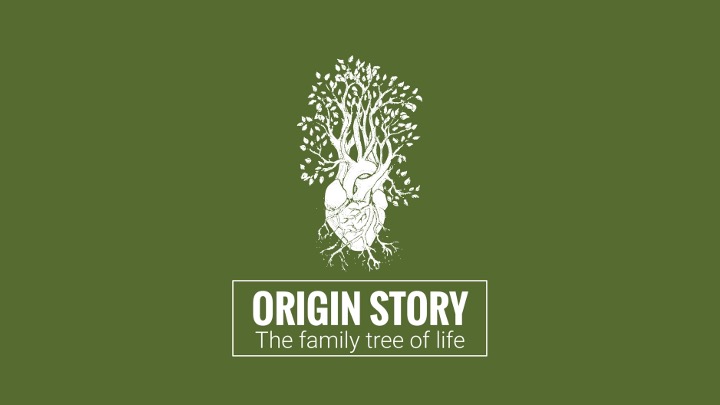I’ve enjoyed the process of turning the nine sermons I preached on Genesis 1-11 into posts. I thought I’d do a sort of ‘index’ post with links to all nine, along with the passage covered, and mark a transition into a second series.
I’m going to post up my sermons from Revelation from 2021 next, and then from Matthew’s Gospel (start of 2022), because these all became the basis of a big series on being human in 2023.
Here are the Genesis sermons.
- In the Beginning (Genesis 1): An introduction to the idea of the heavens and the earth being separate realms created in the beginning, to ancient cosmology, and to the idea that the Genesis story is both literature read through Israel’s history — especially in exile in Babylon, and that it creates themes threaded through the entire narrative of the Bible, fulfilled in Jesus. Genesis 1 presents heaven and earth being separate as a reality that will create tension through the narrative, and the primordial state of being ’empty and uninhabited’ as something God’s representative image bearing humans will join him in overcoming as we fill it not just with the life he creates, but with his rule and presence.
- Eden and the Earthlings (Genesis 1:26-2:25): Reading the story of the creation of the ground-man or earthling, and then the woman, in a heaven on earth place as a critique of other stories of how idol statues in the ancient world were made that teaches a very different vision of the nature of God and the purpose of human life, and seeing it fulfilled in the resurrection of Jesus and God’s Spirit being breathed into a new humanity to make us heavenly beings not just earthlings. Also noticing that the man and woman were created to represent God together where the woman is an ally in the priestly task of ‘cultivating and guarding’ heavenly space on earth.
- Treason against the tree-son (Genesis 3): Reading the story of the Fall as an act of rebellion; seizing the life God offers to us on our own terms in order to rule, as Satan the dragon-beast pulls humans from representing God to beastliness and death — exile from God’s gift of heavenly life; seeing this pattern run through to Jesus in gardens in the Gospels, where, at Gethsemane humans bring tree-weapons and swords to seek the death of the life of God in the ultimate act of rebellion, as God gives his life to the world.
- East of Eden (Genesis 4): Adam and Eve are exiled east of the Garden — but it seems, still in the region of Eden, separated from heaven-on-earth life by Cherubim (like those stitched onto the curtain that separates God’s people from God’s presence in the Tabernacle and Temple).
When Cain is consumed by sin — which crouches at his door waiting to devour — and becomes a bloody beast, he is exiled further to the east; to wander around other murderous humans. He builds a city, and a family tree defined by violence and vengeance.
The movement east culminates in Babylon both in Genesis 1-11, and in Israel’s exile — by the end of the Old Testament God’s people are waiting for a king, and for God’s presence to return to the Holy of Holies in the Temple; moving from east to west. Jesus arrives as God and king to bring heavenly life back to his people and end our exile into the wilderness; entering Jerusalem from the East to cleanse the Temple and then tear the curtain. - A Giant Problem (Genesis 6:1-8): The weird passage about the Nephilim; offspring of rebellious heavenly beings; plants seeds for giant opposition to God’s people living in peace in ‘heaven on earth’ places like Eden.
- The Ark and the Covenant (Genesis 6:9-8:22): The story of Noah’s Ark is a story of de-creation and recreation in response to violence filling the land as humans (except for Noah) are more like serpents than God. God carries people through death in an ark that anticipates the Exodus and the Gospel.
- Don’t be a Nimrod (Genesis 9-10:32): After the flood things go down hill (or down the mountain) fast as Noah’s sons form the family tree of the nations who will feature in the Old Testament story; chief among these descendants is Nimrod, who’s a violent warrior hunter, an anti-Adam, who builds Babylon and Assyria.
- Why be a Brickman when you can be a brick, man (Genesis 11:1-9): The story zooms in on the creation of Babylon told in contrast to Babylon’s own mythology, depicting the city and its heaven-on-earth project as a failure in a way that will resonate deeply for Israelite people held in exile in Babylon as King Nebuchadnezzar builds towers to the heavens made from bricks stamped with his name.
- Getting outta Babylon (Genesis 11:10-12:20): Abram and his family are called out of Chaldea (part of Babylon) to head back west towards life with God, as his people of promise. They come to a cross roads, and travel through Egypt; where those who mistreat God’s people experience curse in a way that anticipates the Exodus and is a picture of the Old Testament hope that God’s people will be called out of exile in Babylon again.
